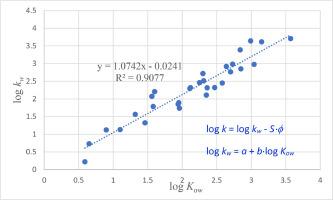Retention factor variation on wide range of mobile phase compositions in reversed-phase high-performance liquid chromatography; a short tutorial
Abstract
Mobile phase composition remains the major experimental parameter influencing the separation process in reversed-phase high-performance liquid chromatography (RP-HPLC). Its influence on the retention of solutes is explained by the Hildebrand solubility parameter and solvophobic theory, which also considers molecular characteristics of the participants in a separation process. The main empirical dependences (linear and polynomial) between the retention factor and the composition of mobile phase (retention function) are discussed taking into consideration a wide range of mobile phase compositions. Two direct chromatographic indices are resulting from these equations: the extrapolated value of retention factor for zero organic content in mobile phase composition (log kw) and the solvent strength parameter (S), which for a linear retention function is its slope being constant over the entire mobile phase compositions. Another chromatographic index could result from the retention function for zero content of water in mobile phase, but this situation can be applied only for very hydrophobic solutes. For large domains of mobile phase composition, the retention function cannot be described by a single type of dependence. This explains the paradox of generating by extrapolation different values for different organic components. For the mobile phase close to pure water the retention function is different from that at average water concentration.


 求助内容:
求助内容: 应助结果提醒方式:
应助结果提醒方式:


